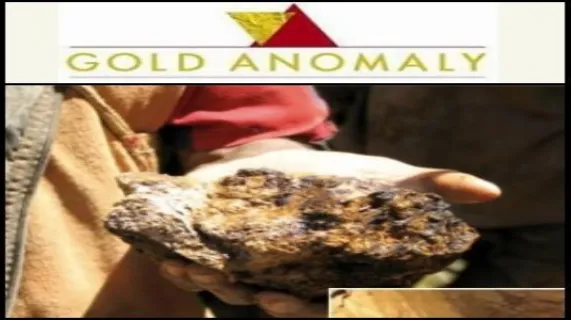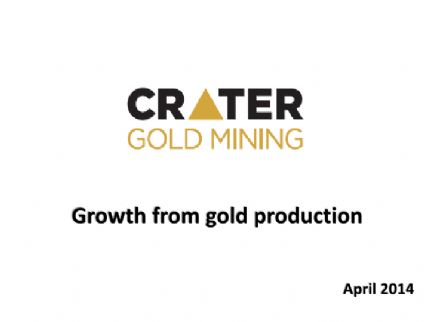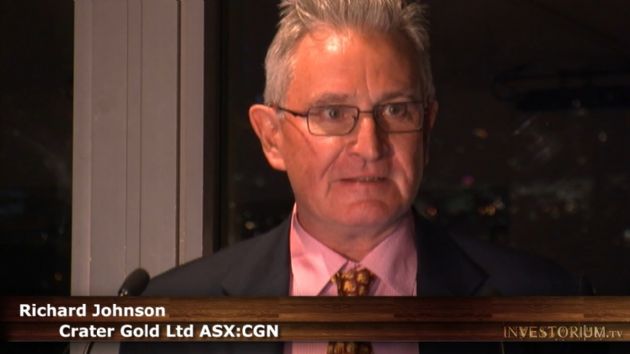
Positive Metallurgical Results for Crater Mountain, PNG
Sydney, July 30, 2012 AEST (ABN Newswire) - Gold Anomaly Ltd ( ASX:GOA) is pleased to announce encouraging results from initial metallurgical testwork on gold sourced from its Crater Mountain project in Papua New Guinea. Preliminary results indicate that most gold within the Mixing Zone at the Nevera Prospect could be recovered by fine grinding and cyanide agitation leaching.
ASX:GOA) is pleased to announce encouraging results from initial metallurgical testwork on gold sourced from its Crater Mountain project in Papua New Guinea. Preliminary results indicate that most gold within the Mixing Zone at the Nevera Prospect could be recovered by fine grinding and cyanide agitation leaching.
Gold Anomaly's drilling programmes commencing in early 2011 defined an initial 790,000 ounce inferred gold resource within the Mixing Zone. This zone spans 600m x 250m x 250m and is open laterally and possibly to depth.
A preliminary metallurgical assessment of the "Mixing Zone" gold mineralisation in the Nevera Prospect within the Company's Crater Mountain tenements, involving gravity recovery, cyanide leaching and flotation testwork, has been conducted for Gold Anomaly Ltd by SGS Lakefield Oretest Pty Ltd of Perth, WA, on a 160kg composite sample of drill core.
Samples making up the composite were of split core from a number of intersections between 230m and 320m in NEV019 and 310m and 340m in NEV025, with an average gold grade of 1.27 g/t Au.
Testwork carried out on the composite sample included:
- laboratory-sized Knelson Concentrator gravity separation,
- bottle roll cyanidation, and
- batch rougher flotation
No work was considered necessary on the high-grade artisanal mining area mineralisation as it is demonstrably easy to recover gold from the simple techniques employed successfully by the local miners.
Using a grind of 75 microns, simple gravity separation recovered more than 50% of the contained gold, whilst bottle roll agitation cyanide leaching recovered between 76 and 83%, and floatation a little more than 95%. Reprocessing of the Knelson gravity concentrate using a hand pan showed that final concentrate grades of greater than 100 g/t Au should be readily achievable.
Cyanidation Testing
Metallurgical testing showed that the gold leached quickly from the mineralised material at four different grind sizes; from a "coarse" 180 micron grind to a "standard" 75 micron grind, where the final gold recovery was 76 %. On average, most of the gold was dissolved into solution in a relatively quick 8 hours Grinding characteristics of the ore were found to be good.
The cyanidation results indicate:
- Leach kinetics were rapid with leaching essentially complete after 8 hours.
- Agreement between assayed and calculated head assays was good in most cases.
- Cyanide consumptions were moderately low (0.79 kg/t to 0.92 kg/t).
- Gold extraction ranged from 75.0 % (P80 = 180 µm), to 78.9 % (P80 = 75 µm).
Tailings from the cyanidation testing were examined by electron microscope and roughly two-thirds of the remaining gold was found to be encased in sulphide and one-third in silicate, preventing exposure to the cyanide solution at the 75 micron grind: possible solutions to increase the gold recovery to over 90% include ultra-fine grinding (perhaps after initial rougher floatation concentration as above to reduce the bulk for ultra-fine grinding), bio-leaching and pressure leaching. Further metallurgical testing is planned to trial ultra-fine grinding.
In commenting on the preliminary metallurgy results, Exploration Director Peter Macnab said…. "The test results are pleasing as they indicate crushing and grinding characteristics are good, and that at a 75 micron grind more than 75% of the Mixing Zone gold can be expected to be extracted by agitation leach in 8 hours, with moderate lime and cyanide usage. Possible methods to increase this to more than 90% gold recovery include ultra-fine grinding, and biological or pressure leaching. It is noteworthy that simple floatation of the 75 micron grind produced a concentrate with more than 95% of the gold from the sample, and floatation followed by ultra-fine grinding of the resulting concentrate before cyanidation may be the simplest way to increase final cyanide gold recovery. We are confident that further metallurgical testing will provide a flowsheet capable of recovering more than 90% of the gold in the Mixing Zone".
Crater Mountain regional exploration update
- Tenement package now covers the entire Crater Mountain hydrothermal field
- Three regional targets defined to date show similar alteration and geochemical characteristics to Nevera
- Range of targets from near surface epithermal to porphyry Cu-Au
Although historic prospecting has indicated a number of gold and copper target areas, including the Nimi, Masi and Awanita Prospects (see Figure 1 link below), systematic exploration has not previously been conducted over the Crater Mountain volcanic complex and its related mineralised hydrothermal systems, and Gold Anomaly has now commenced regional exploration to accomplish this.
During late 2011 and 2012 the Company has carried out detailed geological mapping and sampling on the Nimi and Awanita Prospects, and commenced work on the Masi Prospect, all of which show similar mineralisation characteristics to the Nevera Prospect which has been the Company's main focus since 2010. Infill exploration between the identified prospects is planned, and later in the year work will commence on the recently applied for regional license ELA 2203, once it is granted.
The Company's geologists are currently compiling results and assessing the progress of the regional exploration to date, with a number of emerging areas of interest to be the focus of on-going exploration. These results will be reported in full shortly.
For the full release including diagrams, please visit:
http://media.abnnewswire.net/media/en/docs/ASX-GOA-243899.pdf
Contact
Gold Anomaly Limited
T: +61-2-9241-4224
F: +61-2-9252-2335
WWW: www.goldanomaly.com.au
| ||
|







